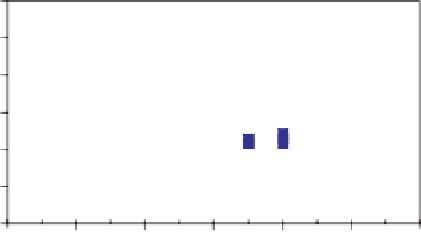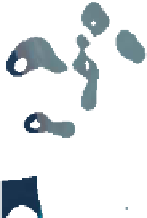Geology Reference
In-Depth Information
paper (Reijmer
et al.,
2009). The majority of the
sediments are dominated by non-skeletal mater-
ial (mud, pellets, peloids, ooids and grape-
stones), although all samples contained small
amounts of skeletal debris. The percentage of
mud in the samples increases rapidly moving
away from the bank margin towards the inter-
ior of the platform with samples completely
composed of skeletal material only present
near the bank margin. The facies distribution
pattern found is fairly similar to that shown in
the facies distribution map of Purdy (1963a,b)
and roughly agrees with the map of Traverse &
Ginsburg (1966).
2.0
1.5
1.0
0.5
0
−
0.5
−
1.0
1
2
3
4
5
Mudstone
Wackestone
Packstone
Grainstone
Rudstone
Facies type
18
O and facies type (1 = mud,
1.5 = mud-rich wackestone, 2 = wackestone, 2.5 = mud-
rich-packstone, 3 = packstone, 3.5 = mud-lean packstone,
4 = grainstone, 5 = rudstone).
Fig. 4.
Relationship between
26
o
N
13
C (
‰
)
V-PDB
5.5
5.3
5.1
25
o
N
4.9
4.7
4.5
4.3
4.1
3.9
3.7
24
o
N
3.5
23
o
N
79
o
W
78
o
W
77
o
W
Fig. 5.
Spatial composition map of
the
km
13
C of bulk carbonate sediments
from GBB.
0
0
50
50
100
100
































































































































































































































































































































































































































































































































































































































































































































































































